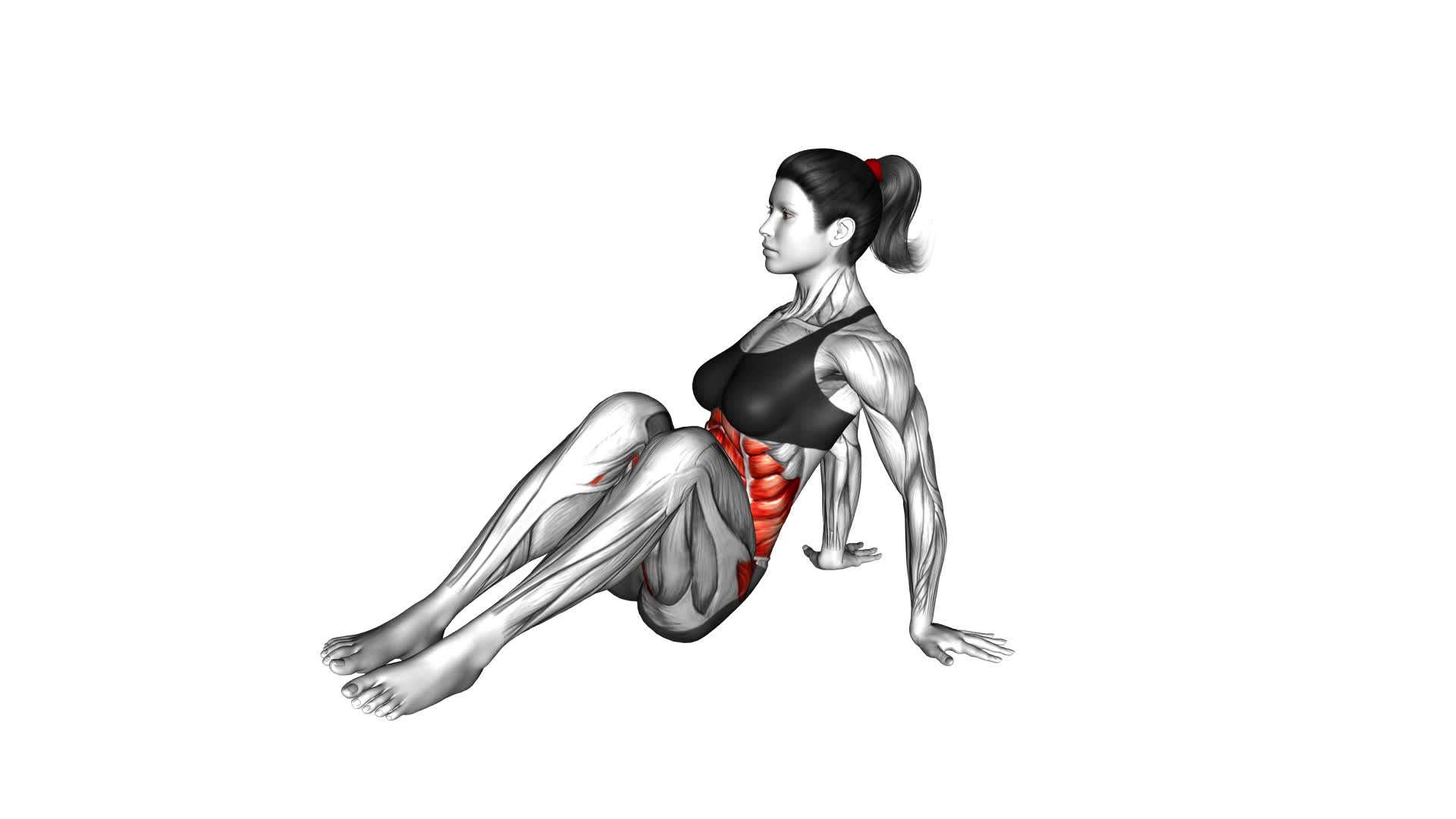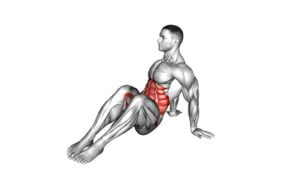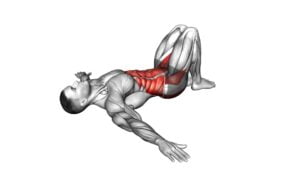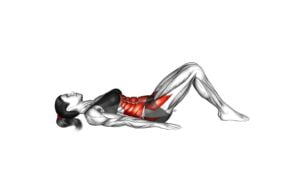Sitting Windshield Wipers (female) – Video Exercise Guide & Tips

Looking to improve your core strength and flexibility? Look no further than sitting windshield wipers! In this video exercise guide, we'll show you the proper form and technique to perform this challenging exercise.
Watch This Exercise Video
Whether you're a beginner or an experienced individual, we've got modifications and advanced variations to suit your fitness level.
Plus, we'll share common mistakes to avoid and tips for maximizing the effectiveness of this workout.
Get ready to strengthen and tone your core like never before!
Key Takeaways
- Sitting windshield wipers target core muscles and improve core strength and stability.
- They enhance flexibility in the hips and increase range of motion in hip muscles.
- Sitting windshield wipers benefit activities that require hip mobility, such as running and sports.
- Proper form and technique, along with engaging core muscles, are essential for maximizing effectiveness and safety during this exercise.
Benefits of Sitting Windshield Wipers
To maximize the benefits of sitting windshield wipers, focus on engaging your core muscles and improving flexibility in the hips.
Sitting windshield wipers are a great exercise for core stability and flexibility improvement. By targeting your core muscles, which include your abdominals and lower back, you can enhance your overall core strength and stability. This exercise requires you to sit on the ground with your legs extended and then rotate your legs from side to side, mimicking the motion of windshield wipers.
As you perform this movement, be sure to keep your core engaged, allowing your abdominal muscles to support your spine and maintain proper alignment. Additionally, sitting windshield wipers help to improve flexibility in the hips. The rotational movement of the legs stretches the hip muscles, increasing their range of motion. This can be particularly beneficial for activities that require hip mobility, such as running or playing sports.
By incorporating sitting windshield wipers into your exercise routine, you can strengthen your core and improve flexibility in your hips, leading to better overall stability and movement.
Now, let's move on to the next section, where we'll discuss proper form and technique for performing this exercise.
Proper Form and Technique
To perform Sitting Windshield Wipers with proper form and technique, it's important to avoid common mistakes that may lead to injury or ineffective results.
By maintaining a stable and balanced position throughout the exercise, you can maximize its effectiveness and ensure safety.
Paying attention to your body alignment and engaging your core muscles will help you achieve the desired benefits from this exercise.
Avoiding Common Mistakes
Make sure you maintain proper form and technique when performing sitting windshield wipers. One common misconception is that you need to swing your legs from side to side as fast as possible. However, this can lead to poor form and potential injury. Instead, focus on controlled and deliberate movements.
Keep your core engaged and your back straight throughout the exercise. Another common mistake is failing to engage your obliques properly. To troubleshoot this, try slowing down the movement and really focus on contracting the muscles on the side of your torso.
As you perform the sitting windshield wipers with proper form and technique, you can maximize their effectiveness and safety.
Maximizing Effectiveness and Safety
To maximize the effectiveness and safety of sitting windshield wipers, continue focusing on controlled and deliberate movements, while maintaining proper form and technique. Follow these tips to maximize your results and prevent injuries:
- Engage your core: Tighten your abdominal muscles throughout the exercise to stabilize your spine and protect your lower back.
- Control the movement: Slowly lower your legs to the side, keeping them together and maintaining control throughout the range of motion.
- Avoid momentum: Don't swing your legs or use momentum to perform the exercise. This can put unnecessary strain on your hip joints and increase the risk of injury.
- Listen to your body: If you feel any pain or discomfort, stop the exercise immediately. Adjust your position or range of motion as needed to prevent injury.
Modifications for Beginners
If you're new to the Sitting Windshield Wipers exercise, there are some modifications you can make to ease into it.
Simplified versions of the exercise can help you build strength and flexibility gradually.
Gentle progression techniques, such as reducing the range of motion or using support, can also be beneficial for beginners.
Simplified Exercise Versions
Try out easier variations of the sitting windshield wipers to build your strength and improve your form. Here are some beginner modifications to help you get started:
- Bent knee windshield wipers: Instead of keeping your legs straight, bend your knees and perform the exercise with smaller movements. This will reduce the strain on your core and make it easier to control the movement.
- Supported windshield wipers: Place your hands on the ground behind you for support. This will provide additional stability and make it easier to maintain proper form throughout the exercise.
- Reduced range of motion: Start by lowering your legs only halfway to the ground instead of going all the way down. As you get stronger, gradually increase the range of motion.
- Slow and controlled movements: Focus on performing the exercise slowly and with control. This will help you build strength and ensure that you're engaging the correct muscles.
Gentle Progression Techniques
As you progress from the simplified exercise versions, incorporating gentle progression techniques can help beginners modify the sitting windshield wipers to further challenge themselves and improve their fitness level.
These progression techniques involve making small changes to the exercise to gradually increase the difficulty.
One variation for beginners is to start with a smaller range of motion, only moving your legs a few inches from side to side.
Another option is to reduce the number of repetitions, performing fewer windshield wipers until you build up the strength and endurance to do more.
Additionally, you can use a resistance band around your thighs to provide extra resistance and make the exercise more challenging.
Advanced Variations for Experienced Individuals
To challenge yourself further, incorporate more intense variations of the sitting windshield wipers exercise. Here are some advanced modifications and challenging variations that will take your workout to the next level:
- Weighted Windshield Wipers: Hold a dumbbell or kettlebell between your feet while performing the exercise. This adds resistance and increases the difficulty.
- Single Leg Windshield Wipers: Lift one leg off the ground and perform the exercise with only one leg. This challenges your core stability and increases the demand on your oblique muscles.
- Tempo Windshield Wipers: Slow down the movement and focus on controlled, deliberate motions. This will engage your muscles for a longer duration and enhance the effectiveness of the exercise.
- Hanging Windshield Wipers: Hang from a pull-up bar or suspension straps and perform the exercise while suspended. This adds an element of instability and requires greater upper body strength.
Incorporating these advanced variations will test your strength, stability, and coordination. Remember to perform each variation with proper form and technique to maximize the benefits and minimize the risk of injury.
Now that you know how to challenge yourself with advanced variations, let's move on to the next section and discuss common mistakes to avoid when performing sitting windshield wipers.
Common Mistakes to Avoid
To ensure proper form and maximize the effectiveness of your sitting windshield wipers exercise, it's important to be aware of common mistakes to avoid. One common mistake is using momentum instead of controlled movements. It's important to engage your core muscles and move slowly and deliberately to fully activate the targeted muscles.
Another mistake is letting your legs drop too low or swing too far, which can strain your lower back and reduce the effectiveness of the exercise. Keep your legs at a comfortable height and maintain control throughout the movement.
Additionally, avoid using your hands or arms to assist in the movement. This can take away from the focus on your core and reduce the intensity of the exercise.
Lastly, make sure to maintain proper posture throughout the exercise. Keep your spine neutral, shoulders relaxed, and engage your core muscles to support your body.
By avoiding these common mistakes, you can perform the sitting windshield wipers exercise correctly and effectively.
Now, let's move on to some tips for maximizing the effectiveness of this exercise.
Tips for Maximizing the Effectiveness
To further enhance the effectiveness of your sitting windshield wipers exercise, follow these tips:
- Maximize results by maintaining proper form: Make sure to keep your back straight and engage your core muscles throughout the exercise. This will help you target the muscles in your obliques and lower back more effectively.
- Gradually increase the intensity: Start with a comfortable range of motion and gradually increase it as you build strength and flexibility. Push yourself, but listen to your body and avoid overexertion.
- Incorporate variations: Spice up your routine by adding variations to the exercise. You can try performing the windshield wipers with ankle weights or a stability ball for an extra challenge. This will help engage different muscle groups and keep your workouts interesting.
- Safety precautions: To prevent injury, it's important to warm up before starting the exercise and stretch afterwards. Additionally, if you have any pre-existing back or neck conditions, consult with a healthcare professional before attempting this exercise. Always listen to your body and modify or stop the exercise if you experience any pain or discomfort.
Frequently Asked Questions
How Many Sets and Reps Should I Do of Sitting Windshield Wipers for Optimal Results?
To get optimal results from sitting windshield wipers, focus on the number of sets and reps you do.
Proper form is key. Start by discussing the current question without the context of the exercise guide.
The number of sets and reps will depend on your fitness level and goals. Generally, aim for 2-4 sets of 8-12 reps.
Remember to maintain a controlled movement and engage your core muscles throughout the exercise.
Can Sitting Windshield Wipers Help With Lower Back Pain?
Sitting windshield wipers can indeed help with lower back pain. By engaging your core muscles, these exercises strengthen your entire midsection, including the muscles that support your lower back.
Performing them with proper form and technique is essential. Start by sitting on the floor with your legs extended and slightly elevated. Slowly lower your legs to one side, keeping them together, then return to the starting position and repeat on the other side.
Remember to engage your core throughout the movement for optimal results.
Are There Any Specific Breathing Techniques to Follow While Performing Sitting Windshield Wipers?
When performing sitting windshield wipers, it's important to focus on your breathing technique. Take deep breaths in and out, and try to synchronize your breath with the movement of your legs. This can help you engage your core muscles more effectively and improve the overall benefits of the exercise for core strength.
Can I Incorporate Sitting Windshield Wipers Into My Daily Workout Routine?
Incorporating sitting windshield wipers into your seated desk workout can be a great way to add some variety and challenge to your routine. They target your core muscles and can help improve flexibility and stability.
If you're a beginner, you can modify the exercise by keeping your legs bent and performing smaller movements. As you get stronger, you can gradually increase the range of motion.
Remember to listen to your body and only do what feels comfortable and safe.
Are There Any Precautions I Should Take Before Attempting Sitting Windshield Wipers?
Before attempting sitting windshield wipers, there are a few precautions you should take.
First, make sure you warm up your core muscles with some gentle exercises. This will help prevent any strains or injuries.
Additionally, listen to your body and start with a modified version if needed. If you have any existing back or hip issues, it's best to consult with a healthcare professional before trying this exercise.
Remember to always prioritize safety and proper form when incorporating new exercises into your routine.
Conclusion
In conclusion, sitting windshield wipers are a beneficial exercise for strengthening the core and improving flexibility. By maintaining proper form and technique, individuals can maximize the effectiveness of this exercise.
Beginners can modify the movement to suit their fitness level, while experienced individuals can try advanced variations for a greater challenge. Avoiding common mistakes is crucial to avoiding injury.
With these tips in mind, anyone can incorporate sitting windshield wipers into their workout routine for a stronger and more flexible body.

Author
Years ago, the spark of my life’s passion ignited in my mind the moment I stepped into the local gym for the first time. The inaugural bead of perspiration, the initial endeavor, the very first surge of endorphins, and a sense of pride that washed over me post-workout marked the beginning of my deep-seated interest in strength sports, fitness, and sports nutrition. This very curiosity blossomed rapidly into a profound fascination, propelling me to earn a Master’s degree in Physical Education from the Academy of Physical Education in Krakow, followed by a Sports Manager diploma from the Jagiellonian University. My journey of growth led me to gain more specialized qualifications, such as being a certified personal trainer with a focus on sports dietetics, a lifeguard, and an instructor for wellness and corrective gymnastics. Theoretical knowledge paired seamlessly with practical experience, reinforcing my belief that the transformation of individuals under my guidance was also a reflection of my personal growth. This belief holds true even today. Each day, I strive to push the boundaries and explore new realms. These realms gently elevate me to greater heights. The unique combination of passion for my field and the continuous quest for growth fuels my drive to break new ground.







